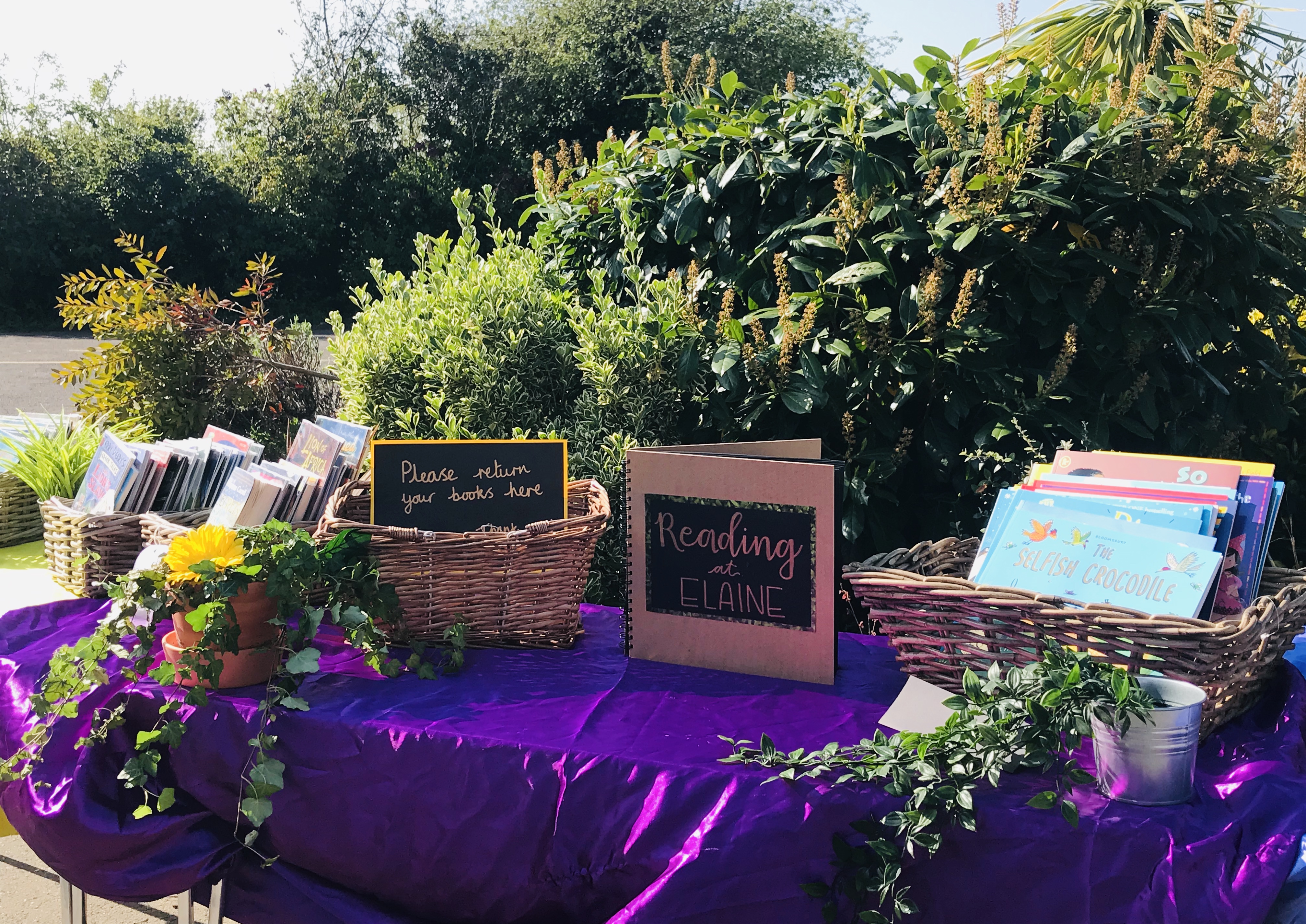Reading & Phonics
Why reading is important.
At Elaine we believe reading underpins success across all aspects of our curriculum. We don’t just teach children to read, we create lifelong learners.
Through developing oracy and book talk alongside the basic skills of decoding, children’s language acquisition effectively develops alongside their reading attainment. Through accessing carefully selected, rich texts that are both read and read aloud; our children have multiple exposures to vocabulary and second tier words.
Fluency, comprehension and pleasure are the core values in our approach to developing successful readers.
How we teach reading
- Reading is taught in tandem with phonics. After a phonics input, children across Reception, Year 1 & Year 2 apply their phonics knowledge by using a fully matched decodable book.
- These daily sessions are 30 minutes long
- There are approximately 6 children in a group and the teacher reads with one group daily. This is called conferencing.
- Children have extra support where appropriate with a trained adult and reading volunteers. The focus is on ‘keep up not catch up’
- The focus in Reception & KS1 is on reading strategies of fluency, decoding and blending.
- Books selected by the teacher show cumulative progress according to the sounds the child has been taught that half term.
- Books show fidelity to the Big Cat Phonics scheme to avoid a mismatch and muddle of a range of approaches.
- The reading sessions follow the model set out in Little Wandle Letters and Sounds Revised.
- In reception, reading sessions start almost immediately. For children who are not decoding, blending remains a focus.
- Children take home books matched to their ability from the same reading scheme used in class. Children are able to self - select books and can speak well about which books they choose and why.
How we teach phonics
- In the Nursery, children follow the Little Wandle Letters and Sounds Revised ‘Foundations for Phonics’ guidance. The focus is on daily oral blending and language development through high quality stories and rhymes.
- In Reception and Y1, children follow the progression within Little Wandle Letters and Sounds Revised programme. Phonics is taught for 25 min every day.
- By the end of Reception, children will have been taught up to the end of Phase 3. If they are ready, children may start Phase 4.
- By the end of Year 1, children will have been taught up to the end of Phase 5.
- In Y2-Y3, phonic lessons are taught daily to children where appropriate – following the model of Little Wandle but plugging specific gaps identified through assessment.
- In Y2-Y6 there are planned catch-up sessions following a set model to address specific gaps. These are taking place at least three times a week, and are often used to target new arrival EAL children.
- All staff including support staff have regular CPD and are confident to deliver a quality first phonics session.
How we assess phonic knowledge.
- In Reception and Year 1, at the end of each week there is a review session which recaps the learning. There are also whole review weeks (pre-planned and bespoke review weeks to address gaps identified by the class teacher’s ongoing formative assessment).
- Children identified in Reception and Y1 as in danger of falling behind are immediately identified and daily ‘keep up’ sessions are put in place – sessions follow the Little Wandle Letters and Sounds Revised programme.
- In Reception and Year 1, the children are assessed at the end of every half-term using the Little Wandle Letters and Sounds Revised assessment tracker.
- Children from Reception to Yr 2 are monitored by book band level. This is especially helpful for transition to the next class, so rapid progress can continue.
- The children in Y1 sit the Phonics Screening Check in the summer term.
- Children who do not pass the Phonics Screening Check in Y1, will re-sit this in Y2.
- Children who are currently in KS2 who didn’t leave KS1 at the expected level are monitored by phonics knowledge and reading progress termly.
- Children who are in Y2-Y6 and need ‘catch up’ sessions are assessed through teacher’s ongoing formative assessment as well as half termly summative assessments.



